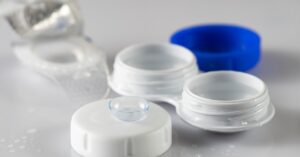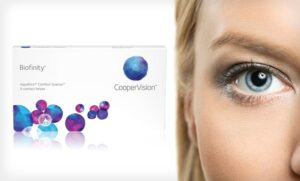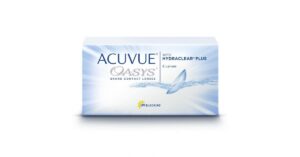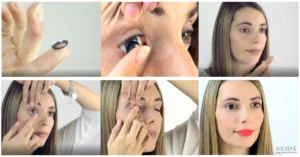Understanding Contact Lens Brands
When it comes to contact lenses, understanding the different types available is essential in making an informed choice. There are various contact lens brands on the market, each offering different options to suit individual needs. In this section, we will explore two popular types of contact lenses: soft contact lenses and rigid gas permeable (RGP) contact lenses, and Learn How to Read Your Contact Lens Prescription.
Soft Contact Lenses
Soft contact lenses are the most popular type of contact lenses, with approximately 90% of contact lens wearers opting for this type (Warby Parker). These lenses are made of soft, flexible plastics that allow oxygen to pass through to the cornea, ensuring optimal eye health and comfort (FDA). Due to their flexibility, soft contact lenses tend to be easier to adjust to and generally more comfortable compared to RGP lenses.
Soft contact lenses come in various designs to meet different vision correction needs. They can correct nearsightedness, farsightedness, astigmatism, and even presbyopia (age-related difficulty focusing on close objects). Some popular soft contact lens brands include Acuvue, CooperVision Biofinity, and Alcon.
Rigid Gas Permeable (RGP) Contact Lenses
Rigid gas permeable contact lenses, also known as RGP or GP lenses, are made of a rigid, durable material that allows for the passage of oxygen to the cornea (FDA). They offer several advantages over soft contact lenses. RGP lenses provide clearer and crisper vision correction, especially for individuals with higher refractive errors. They are also more resistant to deposit buildup, making them longer-lasting compared to soft lenses.
While RGP lenses offer excellent visual acuity, they may require an adaptation period of a few weeks for wearers to become accustomed to their presence on the eyes. These lenses may initially feel less comfortable than soft contact lenses, but many people find that the comfort improves with time.
When it comes to choosing the right contact lens brand, it’s important to consider factors such as comfort, durability, and the specific vision correction needs of the individual. It’s recommended to consult with an eye care professional to determine the most suitable contact lens brand and type for your eyes.
In the next section, we will delve into the components of a contact lens prescription, including details about the right eye (OD) and left eye (OS), base curve (BC) and diameter (DIA), as well as power or sphere (PWR/SPH). Stay tuned to learn how to decode and understand your contact lens prescription.
Factors to Consider When Choosing Contact Lens Brands
When choosing contact lens brands, there are several important factors to consider. These factors can help ensure that you select the right contact lenses that meet your specific needs and preferences.
Comfort and Adjustability
Comfort is a key consideration when choosing contact lenses. Soft contact lenses are made of soft, flexible plastics that allow oxygen to pass through to the cornea, making them more comfortable for many wearers. They may be easier to adjust to and provide a more natural feel compared to rigid gas permeable (RGP) contact lenses, which are harder but allow more oxygen to reach the eyes (FDA).
To ensure maximum comfort, it’s important to follow proper cleaning and disinfecting practices using suitable contact lens cleaner and handle the lenses with clean hands. Additionally, consider the adjustability of the lenses. Some brands offer options for astigmatism correction (toric contact lenses), multifocal correction (multifocal contact lenses), or bifocal correction (bifocal contact lenses). These specialized lenses can provide clear vision for individuals with specific visual needs.
Durability and Deposit Buildup
Durability is an important factor, especially if you are looking for long-lasting contact lenses. RGP contact lenses are generally more durable and resistant to deposit buildup compared to soft contact lenses. They offer a clearer and crisper vision, making them a preferred choice for some wearers. However, it’s important to note that RGP lenses may require a longer adjustment period and may not be as comfortable initially (FDA). On the other hand, soft contact lenses are generally easier to adjust to but may have a shorter lifespan, depending on the prescribed wearing schedule (FDA).
To maintain the durability and clarity of your contact lenses, it is crucial to follow the recommended cleaning and disinfecting instructions provided by the manufacturer. Proper care and storage using appropriate contact lens solutions and periodic replacement as advised by your eye care professional can help prevent deposit buildup and ensure optimal lens performance.
Extended Wear Options
If you prefer the convenience of extended wear contact lenses, it’s important to consider this factor when choosing a contact lens brand. Extended wear lenses are designed to be worn continuously for a specific period, ranging from one to six nights or up to 30 days. They are typically soft contact lenses, although there are also a few RGP lenses approved for overnight wear (FDA).
Before opting for extended wear lenses, it’s crucial to consult with your eye care professional to determine if you are a suitable candidate. Proper cleaning and disinfecting of the lenses before reinserting is essential to maintain eye health and prevent potential complications (FDA). Remember, regular check-ups with your eye care professional are important to monitor the health of your eyes and ensure the continued suitability of extended wear lenses.
By considering factors such as comfort, adjustability, durability, deposit buildup, and extended wear options, you can make an informed decision when selecting contact lens brands. It is always recommended to consult with your eye care professional to determine the most suitable contact lenses for your specific needs and to receive proper guidance on lens care and maintenance.
Decoding Contact Lens Prescriptions
To understand how to read your contact lens prescription, it’s important to familiarize yourself with the components that make up a contact lens prescription. This section will break down the different elements and their meanings.
Components of a Contact Lens Prescription
A contact lens prescription typically consists of two sets of numbers, one for the right eye (OD) and one for the left eye (OS) (Warby Parker). Each set of numbers specifies the parameters necessary for your contact lenses to be properly fitted and provide optimal vision correction.
Right Eye (OD) and Left Eye (OS)
The abbreviations “OD” and “OS” stand for “oculus dexter” and “oculus sinister,” respectively. These terms refer to the right eye and left eye in Latin. Your contact lens prescription will have separate information for each eye, taking into account any differences in visual correction needed.
Base Curve (BC) and Diameter (DIA)
The base curve (BC) and diameter (DIA) are crucial measurements that ensure your contact lenses fit comfortably and securely on your eyes.
The base curve measures the curvature of the back surface of the contact lens. It must match the shape of your cornea for optimal fit and comfort. A base curve that is too steep or too flat can cause discomfort or poor fitting of the lens (SmartBuyGlasses). The base curve is typically a number between 8 and 9 (Warby Parker).
The diameter (DIA) of a contact lens refers to its size. It measures the width of the lens and should fit comfortably over your cornea. The diameter is typically between 14 to 14.5 millimeters (Warby Parker).
Power or Sphere (PWR/SPH)
The power or sphere (PWR/SPH) represents the strength of your contact lens prescription. It indicates the amount of vision correction needed in diopters. A positive (+) or negative (-) number is used to denote farsightedness or nearsightedness, respectively.
Negative numbers indicate nearsightedness, meaning you have difficulty seeing objects in the distance. Positive numbers indicate farsightedness, where close-up objects may appear blurry. The higher the number, the stronger the prescription. It’s important to note that if your prescription indicates “Plano” or “0.00,” it means you have no visual correction needed for that eye (Warby Parker).
Understanding these key components of your contact lens prescription will help you navigate the options when selecting the right contact lenses for your needs. The prescription provides essential information about your eyes and the specific parameters required for a proper fit. Remember to consult with your eye care professional if you have any questions or concerns regarding your contact lens prescription.
Additional Considerations for Contact Lens Prescriptions
When reading a contact lens prescription, there are a few additional considerations to keep in mind. These factors include astigmatism and cylinder (CYL), axis measurement, and prescription expiration.
Astigmatism and Cylinder (CYL)
For individuals with astigmatism, their cornea has an uneven shape, resulting in blurred or distorted vision. Contact lens prescriptions for astigmatism include additional terms and numbers such as CYL (cylinder) and AXIS. The CYL value represents the severity of astigmatism and is measured in diopters, indicating the amount of lens power needed to correct it. The higher the CYL value, the more significant the astigmatism (Warby Parker).
Axis Measurement
In addition to the CYL value, the contact lens prescription will also include an axis measurement. The axis indicates the orientation of the astigmatism in degrees. It tells you where the astigmatism is located on the eye and its specific orientation. This information is crucial for properly correcting the uneven shape of the cornea and ensuring clear vision (Vision Direct).
Prescription Expiration
A contact lens prescription is not valid indefinitely. It has an expiration date, typically determined by the eye care professional. It is important to adhere to this expiration date and renew your prescription regularly. Regular eye exams are essential for maintaining good eye health and ensuring the correct fit and prescription of your contact lenses. It is recommended to consult with your eye care professional if you have any concerns or questions regarding the expiration of your contact lens prescription.
Understanding these additional considerations is crucial when deciphering a contact lens prescription. If you have astigmatism, the CYL and axis measurements are essential for correcting your vision accurately. Additionally, staying up to date with your prescription expiration ensures that you are using the correct prescription and maintaining optimal eye health.
For more information on contact lens brands, how to read contact lens prescriptions, and other related topics, be sure to visit our contact lens brands page.
Exploring Different Types of Contact Lenses
When it comes to contact lenses, there are several options available to suit different needs and preferences. Let’s explore some of the most common types of contact lenses: soft contact lenses, rigid gas permeable (RGP) contact lenses, and scleral, hybrid, and colored contact lenses.
Soft Contact Lenses
Soft contact lenses are the most popular type of contact lenses, with approximately 90% of contact lens wearers opting for this type (Warby Parker). These lenses are made of soft, flexible plastics that allow oxygen to pass through to the cornea, ensuring comfort and maintaining corneal health (FDA). Soft contact lenses are available in various options, including:
- Daily Disposable: These contact lenses are designed to be worn for a single day and then discarded. They offer convenience and eliminate the need for cleaning and storage.
- Weekly or Monthly Disposable: These contact lenses are replaced on a weekly or monthly basis, depending on the specific brand and wearing schedule prescribed by your eye care professional. Regular cleaning and disinfection are necessary for these lenses.
Soft contact lenses are suitable for correcting various vision conditions, including nearsightedness, farsightedness, astigmatism, and presbyopia. They are available in options such as multifocal for varying distances and toric for astigmatism correction. Additionally, colored contact lenses are available for cosmetic purposes, allowing you to change or enhance your eye color.
Rigid Gas Permeable (RGP) Contact Lenses
Rigid gas permeable (RGP) contact lenses, also known as GP lenses or rigid lenses, are another type of contact lens option. These lenses are made from rigid, durable materials that allow more oxygen to reach the eyes compared to traditional hard lenses (Warby Parker). RGP lenses offer several advantages, including:
- Crisper Vision: Due to their rigid nature, RGP lenses provide sharper and clearer vision compared to soft contact lenses.
- Durability: RGP lenses are more resistant to deposit buildup, making them less prone to damage and easier to clean and maintain (FDA).
- Longevity: RGP lenses generally have a longer lifespan compared to soft contact lenses. With proper care, they can last for several months or even years.
However, it’s important to note that RGP lenses may require an adaptation period, as they may not be as comfortable initially as soft contact lenses. The adjustment period can vary from a few days to a few weeks. Your eye care professional will guide you through the process and provide recommendations for a smooth transition.
Scleral, Hybrid, and Colored Contact Lenses
In addition to soft and RGP contact lenses, there are other specialized types available for specific needs. These include:
- Scleral Lenses: Scleral lenses are larger in diameter and rest on the sclera (white part) of the eye, providing a more stable fit. They are often prescribed for irregular corneas or certain eye conditions that require a custom fit.
- Hybrid Lenses: Hybrid lenses combine the best features of soft and RGP lenses. They have a rigid center for clear vision and a soft outer ring for enhanced comfort.
- Colored Contact Lenses: Colored contact lenses are designed to change or enhance the natural color of your eyes, offering a fun and creative way to experiment with your appearance.
It’s important to consult with your eye care professional to determine which type of contact lens is best suited for your specific needs, vision correction requirements, and lifestyle.
By exploring the different types of contact lenses available, you can make an informed decision about which option aligns with your preferences, vision needs, and comfort level. Your eye care professional will guide you through the process of selecting the most suitable contact lenses and provide instructions on proper usage, cleaning, and maintenance. Remember to follow their advice and schedule regular check-ups to ensure optimal eye health and vision correction.

























